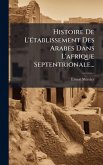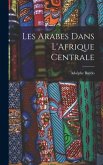Étude Sur La ConquÃate De L'Afrique Par Les Arabes, Volume 1, by Henri Fournel, offers a detailed examination of the Arab conquest of Africa, with specific attention to the Berber tribes who inhabited the central Maghreb region. This historical study, originally published in 1857, provides valuable insights into the cultural and political dynamics of the era. Fournel's work explores the interactions between the invading Arab forces and the indigenous Berber populations, shedding light on the complexities of the conquest and its lasting impact on the region. The book delves into the social structures, customs, and historical narratives of the Berber tribes, offering a comprehensive understanding of their role in shaping the history of North Africa. This volume is an essential resource for scholars and history enthusiasts interested in the Arab expansion and its consequences in Africa. This work has been selected by scholars as being culturally important, and is part of the knowledge base of civilization as we know it. This work was reproduced from the original artifact, and remains as true to the original work as possible. Therefore, you will see the original copyright references, library stamps (as most of these works have been housed in our most important libraries around the world), and other notations in the work. This work is in the public domain in the United States of America, and possibly other nations. Within the United States, you may freely copy and distribute this work, as no entity (individual or corporate) has a copyright on the body of the work. As a reproduction of a historical artifact, this work may contain missing or blurred pages, poor pictures, errant marks, etc. Scholars believe, and we concur, that this work is important enough to be preserved, reproduced, and made generally available to the public. We appreciate your support of the preservation process, and thank you for being an important part of keeping this knowledge alive and relevant.
Bitte wählen Sie Ihr Anliegen aus.
Rechnungen
Retourenschein anfordern
Bestellstatus
Storno








